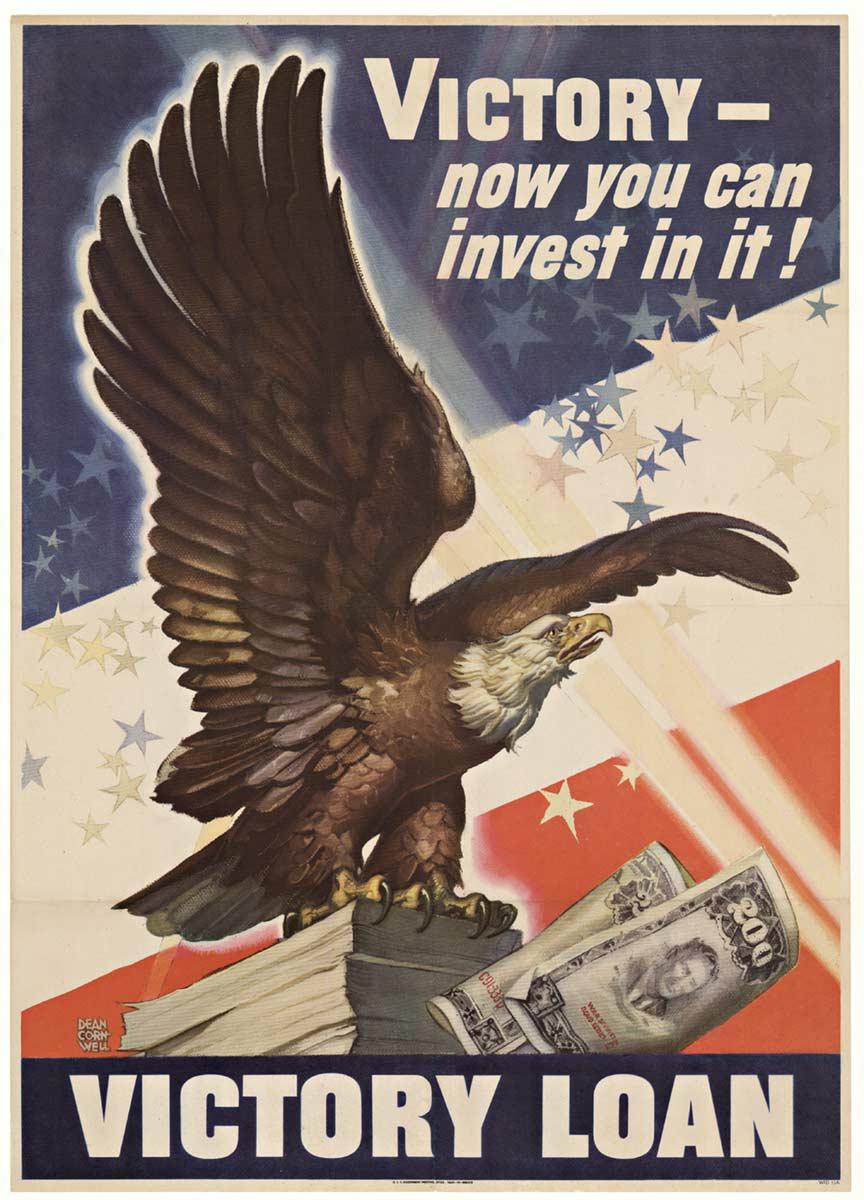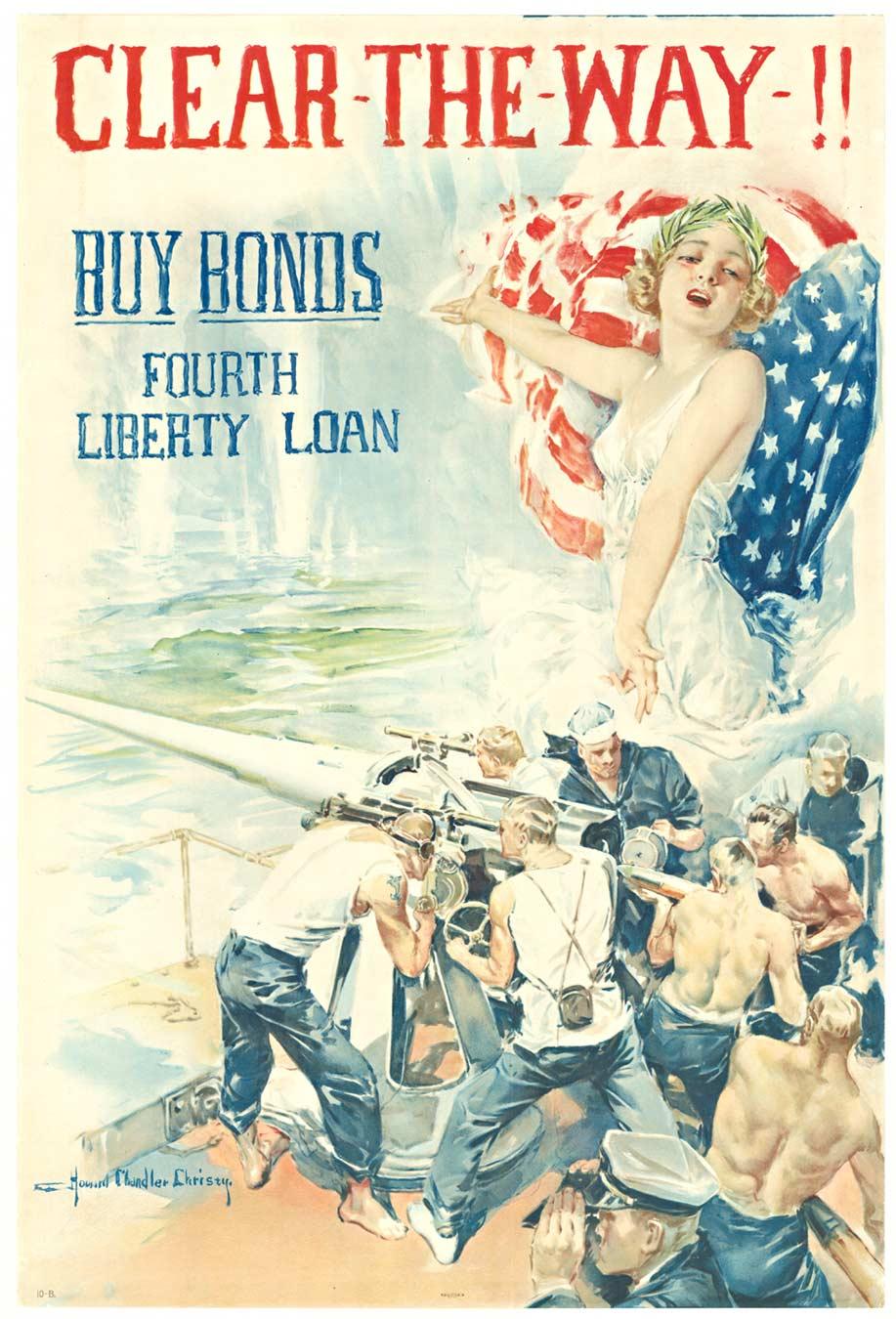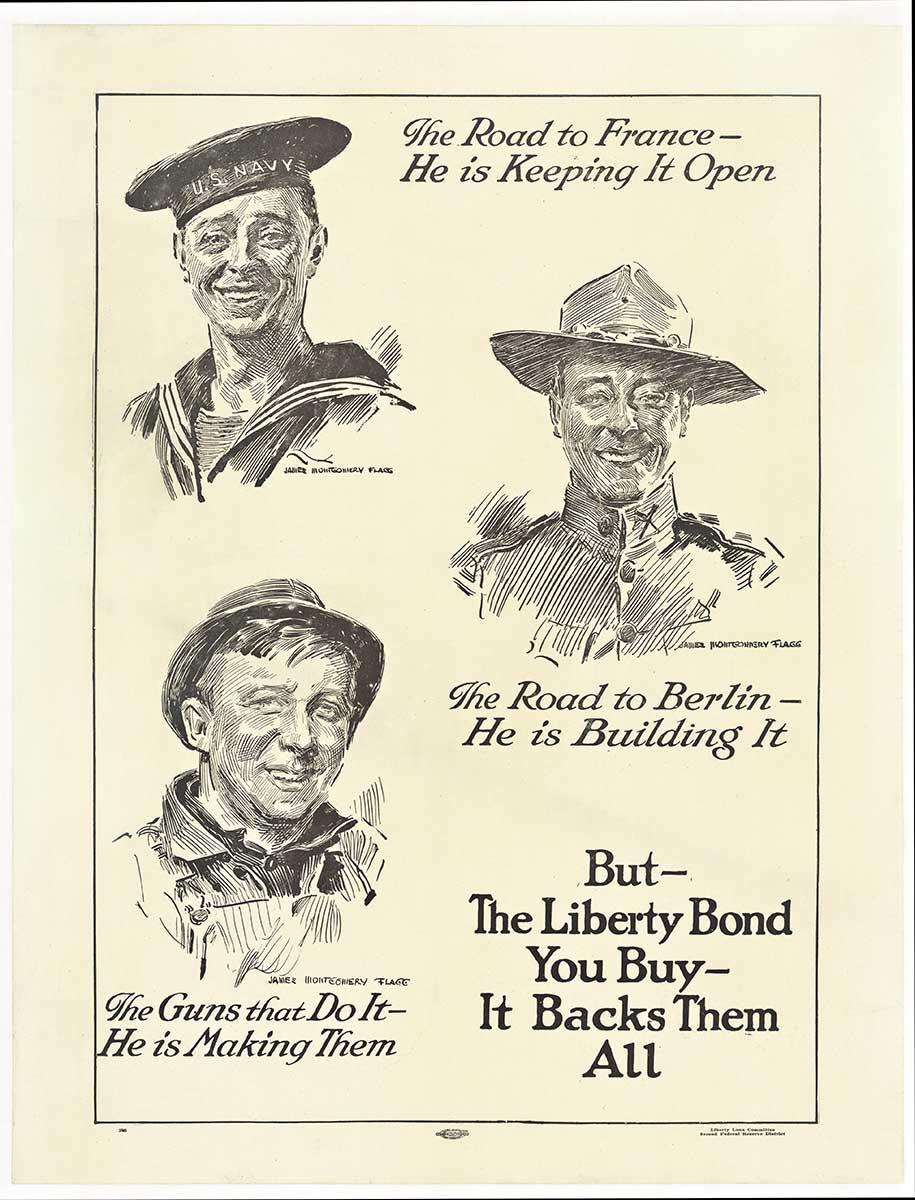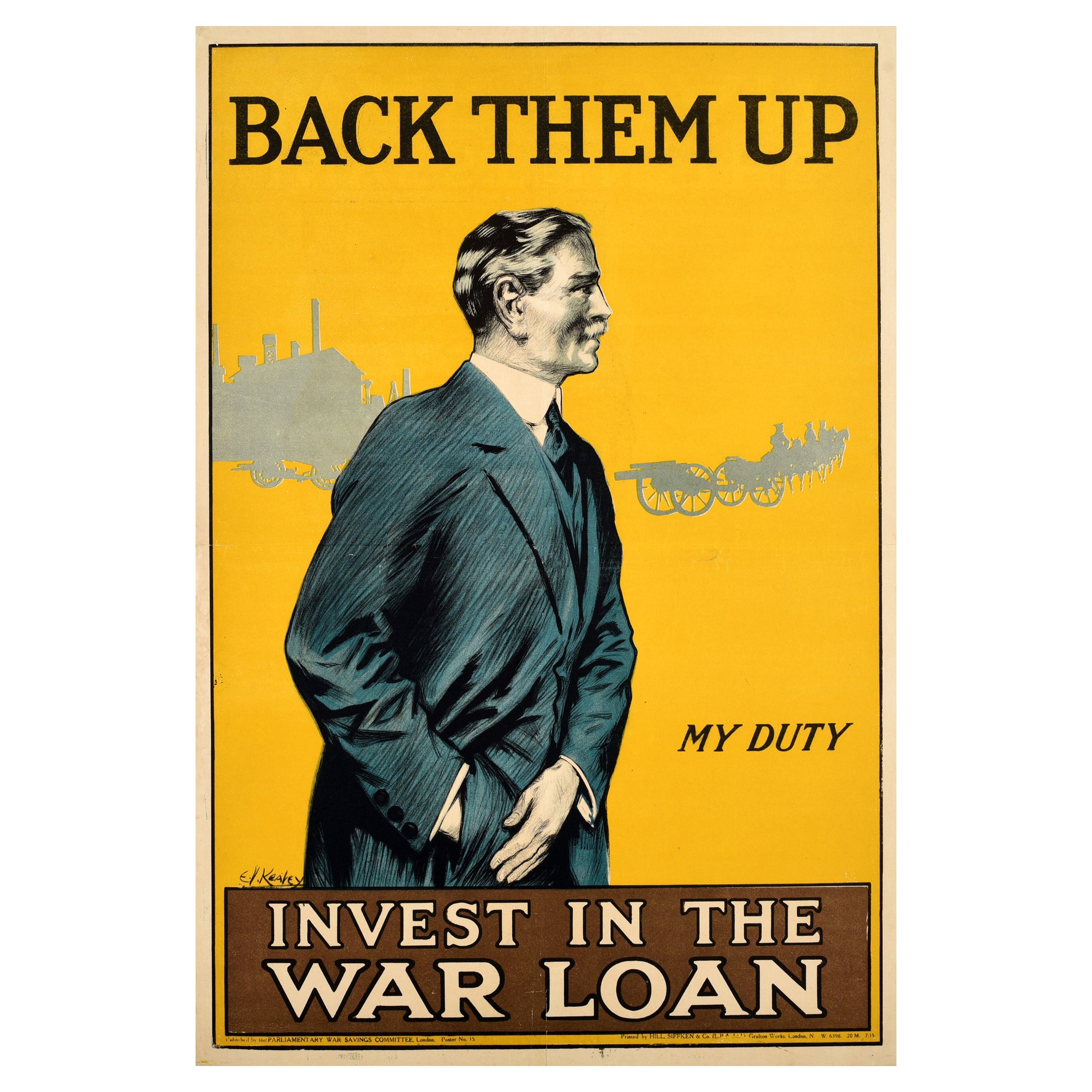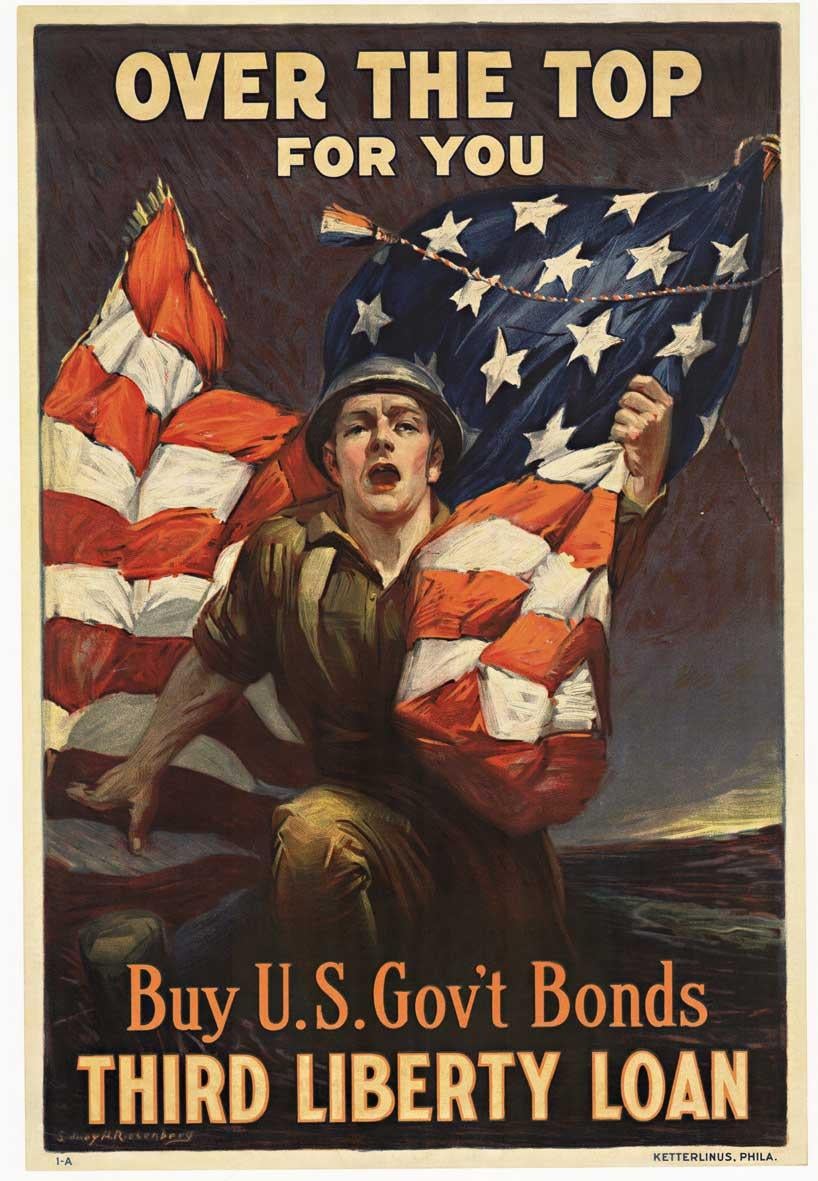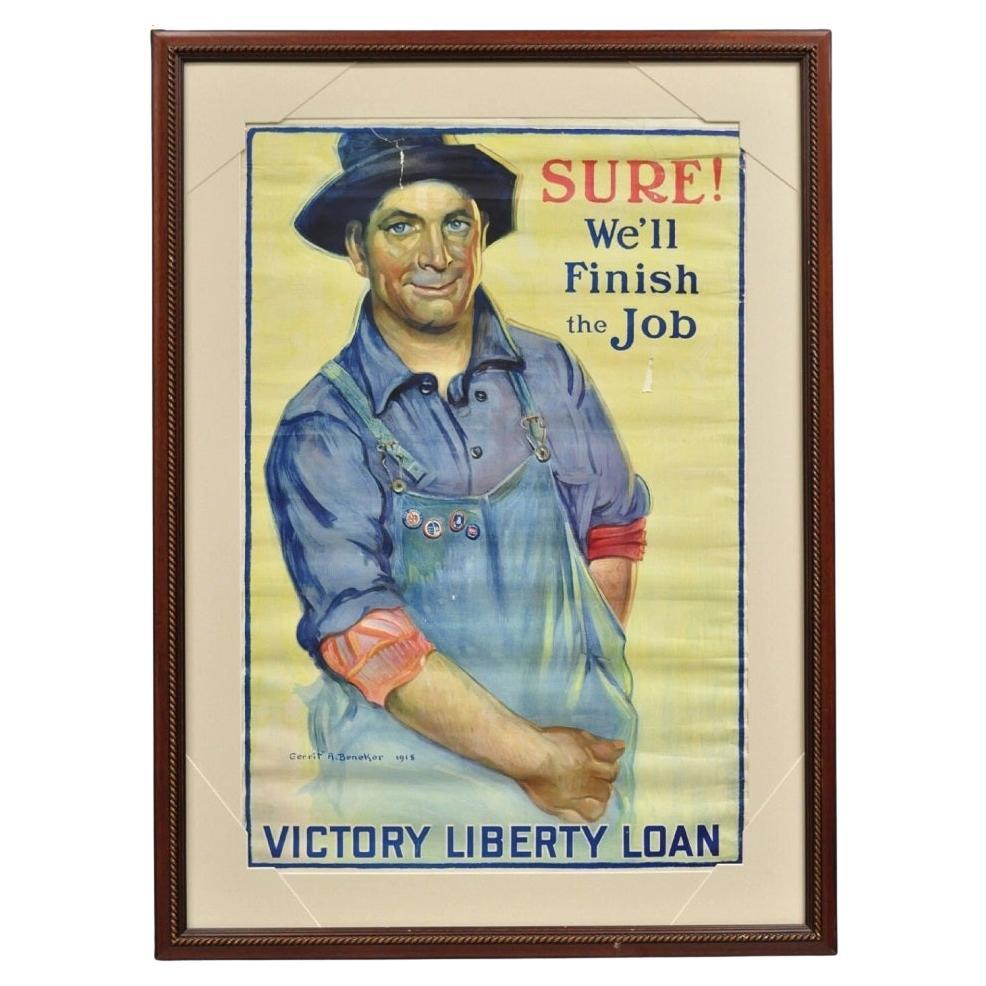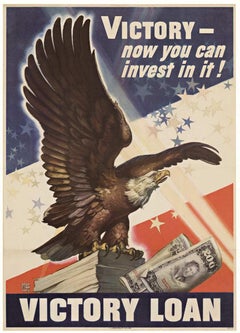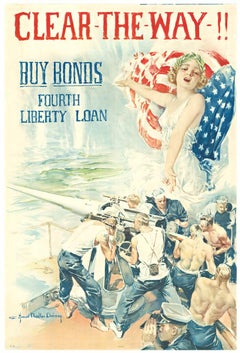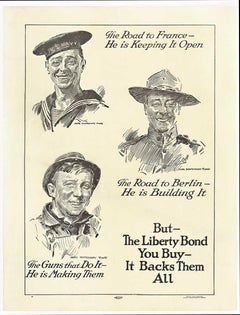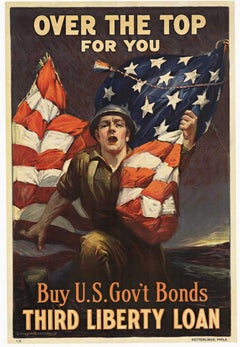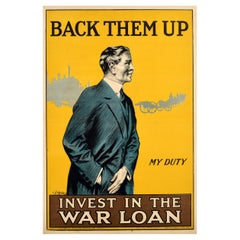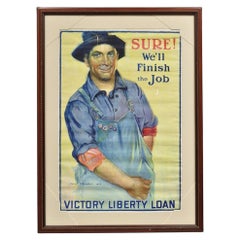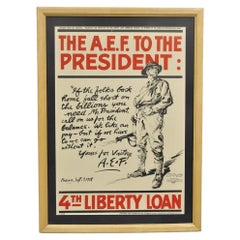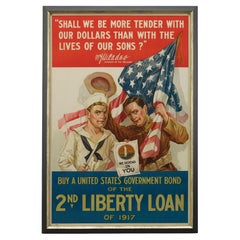Items Similar to Original Victory Liberty Loan Invest 1919 vintage poster
Want more images or videos?
Request additional images or videos from the seller
1 of 8
Cyrus LeRoy BaldridgeOriginal Victory Liberty Loan Invest 1919 vintage poster1919
1919
$300
$37520% Off
£223.15
£278.9420% Off
€261.26
€326.5820% Off
CA$418.60
CA$523.2520% Off
A$468.43
A$585.5320% Off
CHF 244.59
CHF 305.7420% Off
MX$5,758.83
MX$7,198.5320% Off
NOK 3,085.79
NOK 3,857.2420% Off
SEK 2,903.72
SEK 3,629.6520% Off
DKK 1,949.23
DKK 2,436.5320% Off
Shipping
Retrieving quote...The 1stDibs Promise:
Authenticity Guarantee,
Money-Back Guarantee,
24-Hour Cancellation
About the Item
Original WW1 vintage poster: Victory Liberty Loan
To the folks back home -
We are finishing our job. Are you finishing yours?
Original; linen backed.
To the folks back home:-
We are finishing our job. Are you finishing yours?
Private A.E.F.
On the Rhine 1919
Printed and donated by Robert Gair Company, Brooklyn, NY
Artist: LeRoy Cyrus Baldridge.
Professional acid-free archival linen backed and ready to frame. Excellent condition.
A Poster originated and was produced for the Victory Liberty Loan by members of the American Expeditionary Force.
This is an Original Lithograph Vintage Poster; it is not a reproduction.
- Creator:Cyrus LeRoy Baldridge (1899 - 1975, American)
- Creation Year:1919
- Dimensions:Height: 29.25 in (74.3 cm)Width: 19.75 in (50.17 cm)Depth: 0.05 in (1.27 mm)
- Medium:
- Movement & Style:
- Period:
- Condition:Archival linen backed, very clean, minor touch up along the white area in the bottom blank areas visible only when close inspection.
- Gallery Location:Spokane, WA
- Reference Number:Seller: 57831stDibs: LU1404210020092
About the Seller
5.0
Platinum Seller
Premium sellers with a 4.7+ rating and 24-hour response times
Established in 1998
1stDibs seller since 2020
233 sales on 1stDibs
Typical response time: 1 hour
- ShippingRetrieving quote...Shipping from: Spokane, WA
- Return Policy
Authenticity Guarantee
In the unlikely event there’s an issue with an item’s authenticity, contact us within 1 year for a full refund. DetailsMoney-Back Guarantee
If your item is not as described, is damaged in transit, or does not arrive, contact us within 7 days for a full refund. Details24-Hour Cancellation
You have a 24-hour grace period in which to reconsider your purchase, with no questions asked.Vetted Professional Sellers
Our world-class sellers must adhere to strict standards for service and quality, maintaining the integrity of our listings.Price-Match Guarantee
If you find that a seller listed the same item for a lower price elsewhere, we’ll match it.Trusted Global Delivery
Our best-in-class carrier network provides specialized shipping options worldwide, including custom delivery.More From This Seller
View AllOriginal 'Victory Loan Victory - now you can invest in it!' vintage poster
By Dean Cornwell
Located in Spokane, WA
Original WWII poster: VICTORY - NOW YOU CAN INVEST IN IT! VICTORY LOAN. Linen-backed in very good condition. Restored 'original' fold marks during linen backing which are not ...
Category
1940s American Realist Animal Prints
Materials
Offset
Original "Clear the Way!! Buy Bonds Fourth Liberty Loan, vintage poster, 1917
By Howard Chandler Christy
Located in Spokane, WA
Original "Clear the Way !!" Buy Bonds Fourth Liberty Loan vintage poster.. With Lady Liberty holding the U. S. Flag above the soldiers prepari...
Category
1910s American Realist Portrait Prints
Materials
Lithograph
Original The Liberty Bond You Buy It Backs Them All World War 1 vintage poster
By James Montgomery Flagg
Located in Spokane, WA
The Liberty Bond You Buy The Liberty Bond You Buy.
Archival linen backed in very good condition; ready to frame. Printer: Liberty Loan Committee Second Federal Reserve District.
O...
Category
1910s American Realist Portrait Prints
Materials
Lithograph
Original Over the Top for You Third Liberty Loan vintage World War 1 lithograph
By Sidney Riesenberg
Located in Spokane, WA
Original vintage poster: Over the Top for You; artist Sidney Riesdenberg, 1917, World War 1 original antique lithograph poster. Very good /...
Category
1910s American Realist Portrait Prints
Materials
Lithograph
Original 2nd Liberty Loan of 1917 vintage poster
Located in Spokane, WA
Original "SHALL WE BE MORE TENDER WITH OUR DOLLARS THAN WITH THE LIVES OF OUR SONS?" vintage poster. Buy a United States Government Bond of the 2nd LIBERTY LOAN of 1917. Depict...
Category
1910s American Realist Portrait Prints
Materials
Lithograph
$740 Sale Price
20% Off
Original 'Cleveland War Fund, All for Victory' vintage lithograph poster
Located in Spokane, WA
Original CLEVELAND WAR FUND, ALL FOR VICTORY, vintage poster, museum linen backed. Presents in Good condition B+ due to restored tears. Printer: The Central Lithograph Co., Cleveland.
Original World War One poster. Museum linen backed.
Restored original fold lines. No paper loss, full lithograph. Please see the large images for the minor defects.
Promoting the Salvation Army...
Category
1910s American Realist Animal Prints
Materials
Lithograph
You May Also Like
Original Antique WWI Propaganda Poster Back Them Up Invest In War Loan My Duty
By E.V. Kealey
Located in London, GB
Original antique World War One propaganda poster - Back Them Up Invest in the War Loan My Duty - featuring a great design depicting a businessman wearing a smart suit reaching into h...
Category
Vintage 1910s British Posters
Materials
Paper
1918 World War 1 "Sure We'll Finish The Job" Victory Liberty Loan Framed Poster
Located in Philadelphia, PA
Original Antique 1918 World War 1 "Sure We'll Finish The Job" Victory Liberty Loan Large Framed Poster by Gerrit Beneker. Circa Early 20th Century. Measurements: 46" H x 34" W x 1" D...
Category
Early 20th Century Unknown Victorian Posters
Materials
Paper
1918 World War 1 The A.E.F To The President 4th Liberty Loan Framed Poster
Located in Philadelphia, PA
Antique 1918 World War 1 "The A.E.F To The President, 4th Liberty Loan" Original Framed Poster Print. Artist: Baldridge, C. Leroy. Circa Early 20th Century. Measurements: 33.5" H x 2...
Category
Early 20th Century Unknown Art Deco Posters
Materials
Wood, Paper
"Shall We Be More Tender with Our Dollar" Vintage WWI 2nd Liberty Loan Poster
Located in Colorado Springs, CO
This original WWI poster was issued as part of the Second Liberty Loan run and dates to 1917. The poster depicts a young soldier holding an American flag in one hand and his uniformed hat in the other. Next to him, a sailor holds a leaflet outstretched toward the viewer. The leaflet is printed with an emblem of the Statue of Liberty and says “We Depend On You.” At the top of the poster is a quote by Secretary of the Treasury McAdoo, “Shall we be more tender with our dollars than we are with the lives of our sons?” The quote is printed in white block letters on a red field. Below, the poster encourages viewers to “Buy A United States Government Bond of the 2nd Liberty Loan of 1917” in white block letters on a blue field. The poster was printed for the U.S. Treasury by Edwards & Deutsch Litho. Co. in Chicago.
The poster encourages Americans to help with the war effort by purchasing bonds to finance the war. Each of the four Liberty Loan campaigns (two in 1917, two in 1918) and the Victory Loan campaign of early 1919 aimed for rapid subscription in the loan and bond programs, to generate quick funding of the war effort. Subscribing to the bonds became a symbol of patriotic duty in the United States and introduced the idea of financial securities to many citizens for the first time.
Working Americans could buy bonds...
Category
Vintage 1910s American Posters
Materials
Paper
U.S. Navy WWI Poster "We Clear the Way for Your Fighting Dollars, " 1918
Located in Colorado Springs, CO
This WWI poster features a US sailor after disembarking from a ship and ready for battle. In the background are powerful warships setting the scene. Below th...
Category
Vintage 1910s American Historical Memorabilia
Materials
Paper
Americans All! Victory Liberty Loan Original Vintage WWI Poster by Christy 1919
By Howard Chandler Christy
Located in Boca Raton, FL
A beautiful woman holds a victory wreath above the names of brave soldiers fighting overseas in this patriotic American WWI poster. The litany of last names displayed is meant to evo...
Category
1910s Art Nouveau Prints and Multiples
Materials
Lithograph
